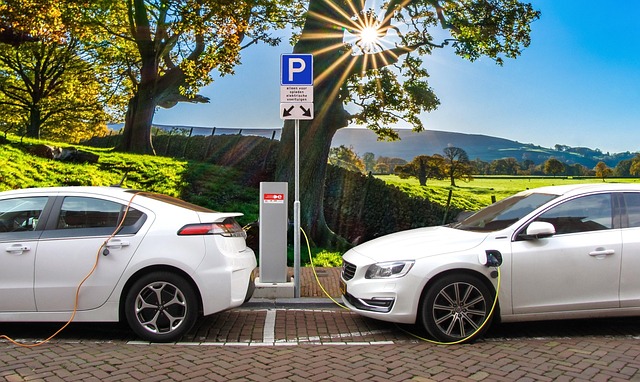Looking to register your car in California? This comprehensive guide will walk you through the entire process, from understanding key requirements to securing your registration certificate. First, grasp the California car registration process and essential documents needed. Next, learn how to utilize a VIN verifier to check your vehicle’s history. Then, master the application form and finalize fees. By following these steps, you’ll smoothly navigate California’s registration procedures. Don’t forget to leverage tools like a VIN verifier for a transparent and efficient experience.
- Understanding the California Car Registration Process
- Gathering Necessary Documents for Registration
- Using VIN Verifier to Check Vehicle History
- Completing the Registration Application Form
- Paying Fees and Obtaining Your Registration Certificate
Understanding the California Car Registration Process

Understanding the California Car Registration Process begins with comprehending the role of a Vehicle Identification Number (VIN) verifier. In California, registering a car involves verifying this unique 17-character code to ensure its authenticity and history. The VIN is like a fingerprint for your vehicle, providing critical information about its make, model, year, and manufacturing location. This process is crucial to maintain the integrity of California’s vehicle registration system.
To register your car in California, you’ll need to undergo either a mobile vin inspection or a standard vin verification. The former involves having a qualified inspector visit you to check the VIN on-site, while the latter can be done at a DMV office. This verification step ensures that your vehicle meets all necessary safety and environmental standards before it’s given the go-ahead for registration.
Gathering Necessary Documents for Registration

Before you begin the registration process for your vehicle in California, it’s crucial to gather all the essential documents. One critical step is to obtain a Vehicle Identification Number (VIN) verifier, which can be easily done through a mobile vin verification service. This service allows you to quickly and conveniently verify the VIN online or via a mobile app, ensuring its accuracy. With a valid VIN, you’ll also need the following:
a valid driver’s license, proof of insurance, and the vehicle’s title (if applicable). Some documents may be available digitally, while others require physical copies. It’s recommended to check with the California Department of Motor Vehicles (DMV) for an up-to-date list of required paperwork to streamline the registration process smoothly.
Using VIN Verifier to Check Vehicle History

Before registering your car in California, it’s crucial to verify its history using a reliable tool like a VIN verifier. The Vehicle Identification Number (VIN) is unique to each vehicle and acts as a digital fingerprint, providing access to its entire service record. By inputting your car’s VIN into an online or mobile VIN verifier, you can gain instant access to critical information about the vehicle’s past, including ownership history, accident reports, and maintenance records.
Using a mobile VIN verifier offers added convenience, allowing you to conduct this essential inspection from the comfort of your home. This method ensures that when you bring your car in for registration, all necessary documents are accurate and up-to-date, streamlining the process and saving you valuable time.
Completing the Registration Application Form

Completing the Registration Application Form involves gathering all necessary documents and accurate information. You’ll need to provide your personal details, vehicle specifications, and identify the type of registration you require. The form asks for your Vehicle Identification Number (VIN), which acts as a unique code for your car, and this is where a mobile VIN verifier can be incredibly useful. By utilizing this technology, you ensure that the VIN provided is accurate and valid, streamlining the process significantly.
This form also requires proof of insurance, so make sure to have your policy details ready. Additionally, for a vin inspection, you might need to include documents related to previous ownership or any recent repairs. Ensure everything is in order before submitting to avoid delays in registering your vehicle in California.
Paying Fees and Obtaining Your Registration Certificate

After completing your vehicle’s registration application, it’s time to tackle the fees involved. In California, you’ll need to pay a base fee for registration, which varies depending on the type of vehicle and its age. There may also be additional charges for emissions testing or other requirements. One crucial step before final submission is to utilize a VIN verifier to ensure your vehicle’s information is accurate, as this helps in verifying ownership and history.
Once all fees are paid, you’ll receive your Registration Certificate. This document is proof of your vehicle’s registration status and should be kept in your vehicle at all times. You can also opt for digital copies or keep a record of your registration details online for easy access. For added convenience, consider a mobile vin inspection or mobile vin verification service to streamline the process and avoid unnecessary trips to government offices.
Registering a car in California is a straightforward process, made easier with the right tools. After gathering all necessary documents and completing the application form, using a VIN verifier can provide valuable insights into a vehicle’s history, ensuring peace of mind. By following these steps and utilizing available resources, you’ll have your car registered smoothly and efficiently.
